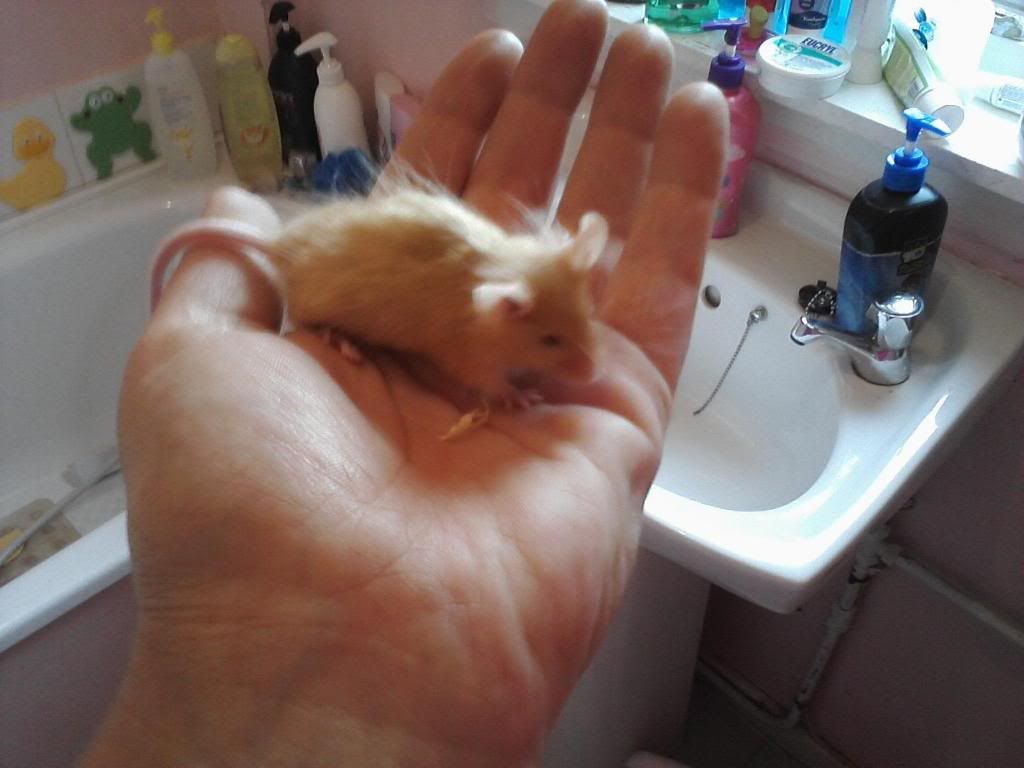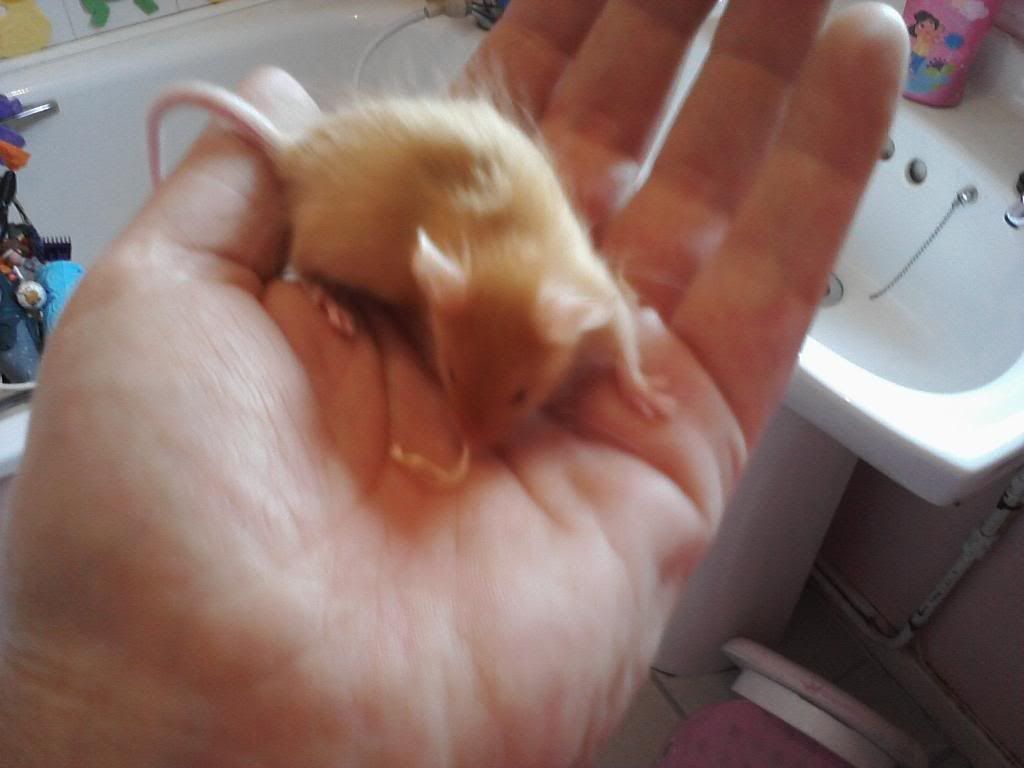ive been calling this little mousey golden satin but recently saw pic of fawn satin ons and they look identical. can anyone help?
![Image]()
![Image]()




It's not (just) a marketing ploy of pet stores. In the US under the AFRMA there are standardized "gold," "fawn," "orange," and "red," in the self classes, but the AFRMA is the only club in the world to divide these up in this way.Roland said:I did not know that "Gold" exists as a colour in mice at all. I always thought there are red satin mice, some are fawn and have pink eyes, the genetic formula is either Ay/* p/p sa/sa or */* e/e p/p sa/sa, or there are black eyed reds, which have the same gene code, but P/* instead of p/p.
English Gold is something completely different, it is A/* b/b p/p and can be satin or not.
So far I associated the naming "Gold Mouse" with a marketingnaming of pet shops of red satins.
Please give some input, if these definitions are different in your country or club.
Have a nice weekend, Roland
Chilloutarea Mousery - Tricolor , Splashed , Merle , Recessive Red
The place where science meets fun!

clearly in this picture.At least one is argente,possibly two and the others fawn,very pretty.quadrapop said:Their baby pics definately satin...]
Yeah, it gets frustrating! It's not just in the international community, either. Even within the USA there are differences. For example, some clubs call a/a p/p lilac whereas others call it dove.Roland said:Anyway, I think it is a pitty that so many different names exist in the international mouse community for the genotypes and phenotypes.
I could say "amen" to this 500 times.Roland said:Yellow is just a name for a bad red
